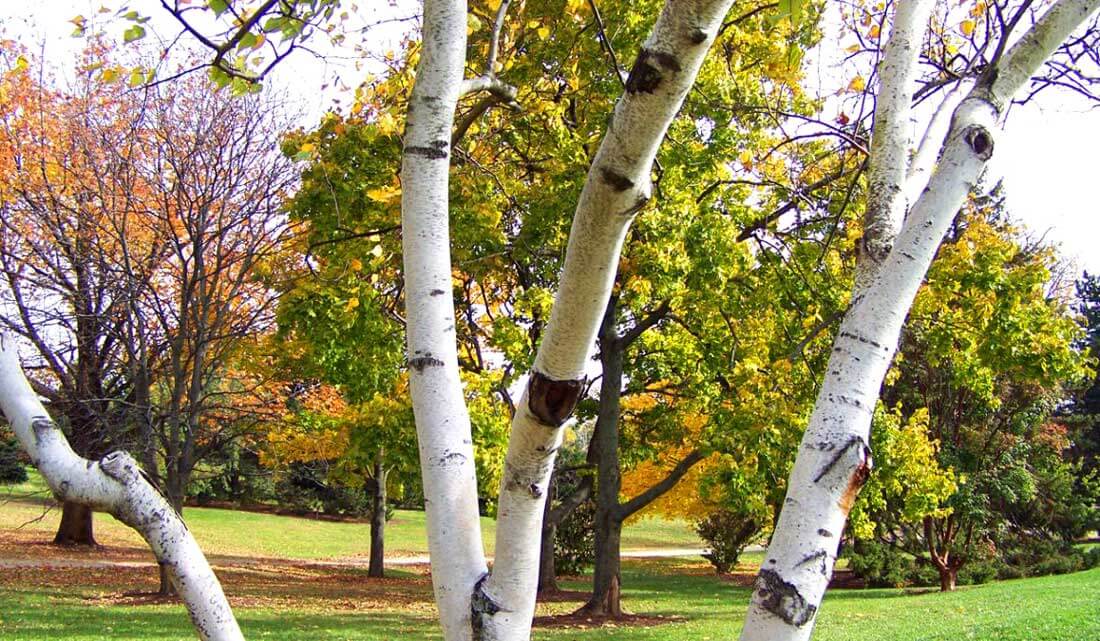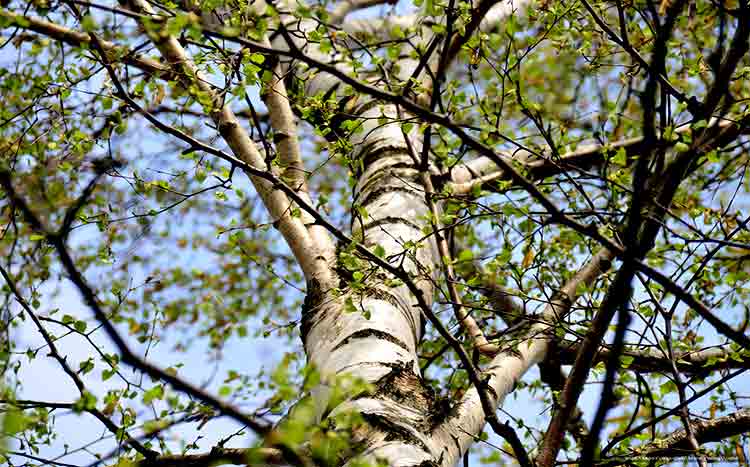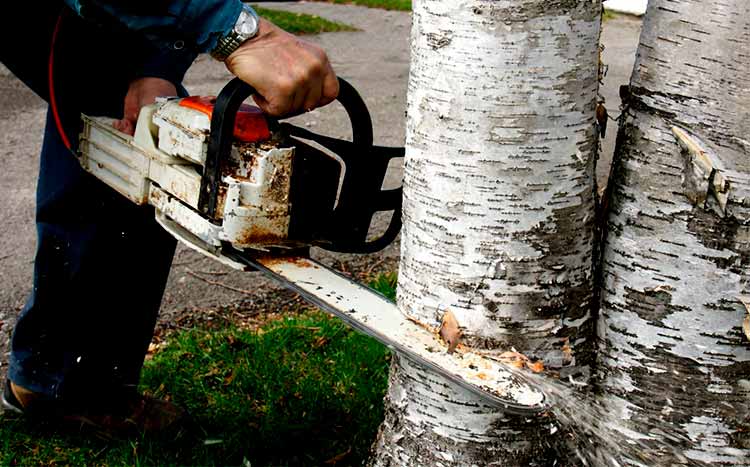Birch trees make outstanding contributions to any garden or landscape.
Trimming mature Birch trees annually between late spring and autumn to remove dead or diseased branches ensures vigorous and healthy growth. Winter trimming results in sap loss so should be avoided. Younger birches should be trimmed a year after planting to help train tree height and spread.
This article is a guide on how to trim and properly care for your Birch tree. Continue reading to learn more.
What we cover
ToggleWhy pruning Birch trees is important
Birch owners trim their trees for several reasons. Here are a few of them:
- Promotes tree growth – by trimming your birch tree, you remove dead limbs that compete with healthy branches for food. This reduces their growth rate impacting the tree’s overall development.
- Reduced disease and pests – removing dead and diseased limbs reduces the spread of fungus and other tree diseases spreading from affected branches to other parts of the tree.
- Safety – trimming overhanging River Birch Tree branches to prevent breaking during storms and strong winds makes the tree safer and prevents it from becoming a hazard to people and property.
- Smartens up your yard – trimming your River Birch tree prevents your yard from becoming an eyesore with thick piles of decaying and unswept leaves from overgrown trees. It makes your property more desirable and improves your reputation with your neighbors.
- Improved views – you get a better picture of your neighborhood and nearby scenery after trimming your yard birch.

When is the best time to trim Birch trees?
Unlike most trees, the best time to trim Birch trees is between summer and autumn. However, your trimming schedule also depends on the following factors.
- Tree age – Young trees can quickly snowball into considerable sizes. Average heights of 90 feet and branch spreads of up to 60 feet are not uncommon. Therefore, we advise trimming your River Birch tree early to achieve your desired tree structure.
- Season – unlike most trees, you can’t prune Birch trees during their late dormant period (late winter months) because they produce heavy sap flows from pruning wounds. However, an arborist can quickly determine the ideal time of the year to trim your River Birch tree.
- Diseases – you should immediately remove all diseased parts of your Birch tree regardless of the season or climate conditions. When you remove diseased branches, you prevent infections and diseases from spreading to other parts of the tree.

How to trim a Birch tree?
You can trim a river Birch tree1 by using several methods that guarantee the tree’s survival and graceful foliage growth. A handy tip when trimming your Birch tree is to remove as few branches as possible. At no point should you remove a significant percentage (greater than 30%) of your tree canopy during trimming.
Below are some tree reduction methodologies:
- Crown thinning – the process of removing weaker, secondary branches to improve the flow of light through a dense crown structure to the lower parts of the tree. For best results, don’t remove branches that are 1st or 2nd order branches from the trunk. Go with 3rd and 4th order.
- Crown reduction – the objective of this procedure is to reduce the height of your Birch tree. You achieve this feat by removing large branches from the tree crown area.
- Crown raising – involves removing lower-level tree branches to increase the crown ground-level clearance and improve light penetration through the tree. Also, the crown benefits from reduced competition for food with more nutrients being redirected to the crown bus spurring faster crown growth.
- Crown cleaning – during crown cleaning, an arborist removes branches that do not fit into your planned tree architecture. It involves removing dead or misaligned branches to preserve the tree structure, improving its aesthetics and canopy light penetration, and cutting off diseased or pest-infested branches.
- Remove dead branches – For a healthy Birth tree, the removal of dead branches is paramount. It allows water and pests a direct freeway right into the tree. The tree can not begin to heal until the dead branch is removed.
Taking down large branches
With quick, easy cuts, you can prune small branches, suckers, and side shoots on your Birch tree. However, removing larger branches requires considerable pruning skills and careful attention to detail to avoid killing your tree. Here are the steps involved.

Step 1: The Undercut
- Measure 18 inches from the trunk outwards along the selected branch with tape.
- Make a notch at the 18-inch mark to indicate the cut-off spot.
- Place a pruning tool at the underside of the cut-off spot and cut the branch working upward to prevent bark and other tree damage from the plunging branch.
Step 2: The Main Cut
- Measure an additional 1-2 inches from the undercut to the trunk.
- Make another notch at the 1-2 inch mark to indicate the cut-off spot.
- Place a pruning tool at the cut-off spot and cut away the section in an upward direction.
Step 3: Tidying Up
- Now you need to perform a collar cut, removing the tranch right back to the union or branch collar.
- Be sure to leave the branch collar so the wound can heal. Remove the branch stub just past the collar.
What pruning tools to use?
2. Hand pruning shears – is suitable for pruning smaller stems about ½ in diameter or lesser.
3. Pruning saws – are available in curved or straight blades of different lengths, thicknesses, and cutting applications.
4. Chainsaw – an essential tool for cutting mature Birch trees. Motorized chainsaws are handy for removing large dead and diseased branches.
5. Safety helmet – protects your head from falling branches and tree debris.
6. Safety harness – keeps you from plunging to the ground when pruning tall birches.
7. Gloves – protect your hands and arms from cuts and bruises from wood splinters.
8. Safety goggles – protect your eyes from flying wood chips generated during the cutting process.
How to care for your Birch tree?
While the emphasis of this article is birch trimming methods and guides, it is also important to provide information on how you can care for your Birch tree.
- Soil: Birch trees thrive in fertile soils with slight acidity levels (pH range between 5.0 – 6.5 pH). However, soil characteristics may vary depending on birch species.
- Irrigation: Even a healthy Birch tree has a superficial root system that develops just below the ground surface to access water and air. Hence, they tend to thrive along river banks and well-watered locations with lots of rainfall or areas with sufficient irrigation.
- Sun: River Birches are cold climate trees that need moderate sunlight of up to six hours each day for optimum growing conditions. Plant your bitch tree in a spot where it is exposed to direct sunshine in the morning and shade during the afternoons.
- Fertilizer: apply slow-release nitrogen fertilizer in an 11-22-22 formula to fertilize the soil during early spring or late fall to promote new growth and keep a healthy River Birch tree.
- Pests and diseases: pests such as birch borers and Birch leafminers afflict River Birch trees, stressing them and may eventually cause the tree’s death. Do not trim birches during winter to avoid infestation from insects attracted by the sap produced by River Birch trees.
- Pruning trees – River birches respond well to a good prune every 2 – 3 years. Removing crossing branches, dead branches, and weak branches. Light pruning is key.
FAQ's
Yes, topping is a dangerous procedure that causes stress in a tree by removing a large branch in its crown. The wounds inflicted by topping can overwhelm a River Birch tree and may cause it to stop growing, eventually killing it.
Yes, you can. Late summer to early autumn is the best time to trim silver birches. However, it is crucial to refrain from pruning silver birches during winter because they lose lots of sap after waking from winter dormancy.
Yes. You can trim certain birch varieties such as silver and Himalayan birch into smaller and slender structures to suit little yards or limited landscapes.
- University of Maryland Extension, (2023) Pruning Trees in the Home Landscape. <https://extension.umd.edu/resource/pruning-trees-home-landscape/> Accessed: 23-02-2024
- University of Minnesota Extension, (2022) Pruning trees and shrubs. <https://extension.umn.edu/planting-and-growing-guides/pruning-trees-and-shrubs> Accessed: 23-02-2024




